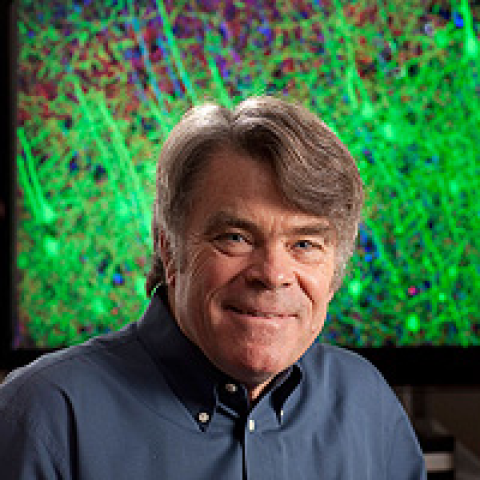Interdisciplinary Initiatives Program Round 3 – 2006
Stephen Smith, Molecular and Cellular Physiology
Krishna Shenoy, Electrical Engineering
James Harris, Electrical Engineering
This work combines expertise from neuroscience, semiconductor photonic devices, and electronics to develop a single-chip optical sensor for long-term, minimally invasive, imaging of brain activity in freely behaving animal subjects, and ultimately, in human CNS neural injury patients. This new technology will allow neuroscientists to study basic mechanisms of brain development and plasticity over very long time periods, and eventually may provide for the development of clinically useful motor prosthetic devices far more stable than the electrical-readout designs that are presently being proposed. Our approach is to fabricate an array of semiconductor light sources and detectors that can be activated and deactivated independently. The sensor detects changes in optical properties of an area of cortical tissue due to fluctuations in blood volume and oxygenation, which are correlated to brain activity. These signals are known as Intrinsic Optical Signals (IOS). The work from this grant will take the first IOS images using an integrated sensor, and evaluate ways to improve performance by using different illumination patterns. We will also develop techniques for imaging IOS in freely behaving subjects, with the goal of studying the development of sensory maps in rats. We seek to form links through this project between the semiconductor device engineering community and neuroscientists to further explore future collaborations and innovative devices for bio-imaging applications.



